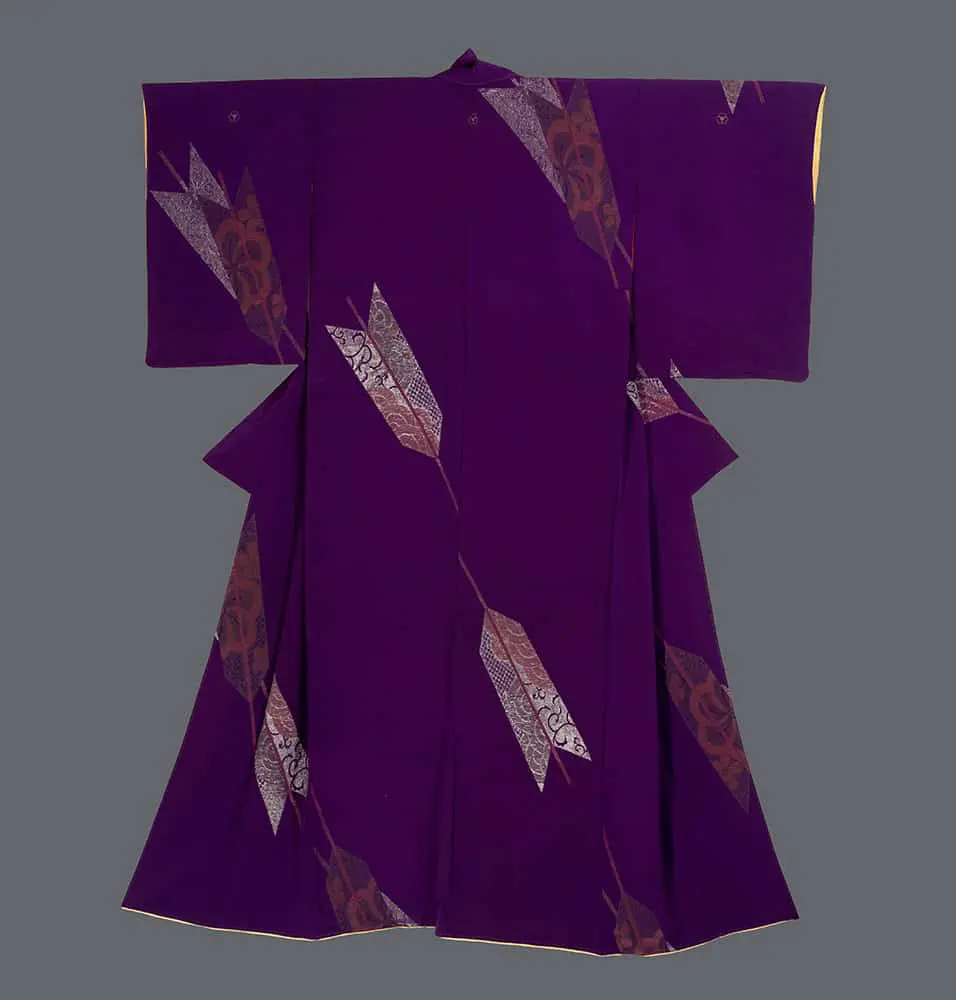This chirimen silk features elegantly rendered arrow motifs scattered across a sumptuous deep purple ground, with each arrow displaying intricate decorative patterns in contrasting tones of coral, silver, and gold. The arrows are depicted with remarkable attention to detail, showing both the fletching and shaft with different ornamental treatments that suggest the influence of classical Japanese archery traditions. The overall composition demonstrates a masterful understanding of negative space, allowing the rich purple background to serve as both canvas and active design element, creating a sense of movement and rhythm across the garment's surface.
The technical innovation of incorporating urushi-coated threads represents a remarkable fusion of textile and lacquer arts, two of Japan's most refined craft traditions. The urushi coating would have provided both visual brilliance and tactile richness, creating threads that catch and reflect light while maintaining the supple drape necessary for fine kimono construction. This technique demonstrates the period's experimental approach to materials and processes, where artisans sought to enhance traditional textiles through the integration of other craft techniques. The chirimen silk base, with its characteristic creped texture, provides an ideal foundation for these enhanced threads, creating subtle surface variations that add depth and complexity to the overall design.
Symbolically, the arrow motif carries profound meaning within Japanese culture, representing protection from evil, the achievement of goals, and the focused intention necessary for spiritual and worldly success. In classical Japanese tradition, arrows were often used in purification rituals and protective ceremonies, making this an especially appropriate design for a formal garment. The arrows' directional quality suggests forward movement and progress, while their association with the samurai class evokes themes of honor, precision, and unwavering purpose. The choice to render these powerful symbols in such luxurious materials and techniques reflects the wearer's aspiration to embody these noble qualities while demonstrating sophisticated taste and cultural knowledge.
It has several silk splits within the inner red lining, all discreetly hidden when the kimono is displayed. It measures 49 inches (125 cm) from sleeve-end to sleeve-end and stands at 62 inches (157 cm) in height.
This artwork is featured on page 272 of Art Kimono: Aesthetic Revelations of Japan, 1905-1960. This book, published by Yorke Antique Textiles, can be previewed or purchased on our website here.
.avif)










